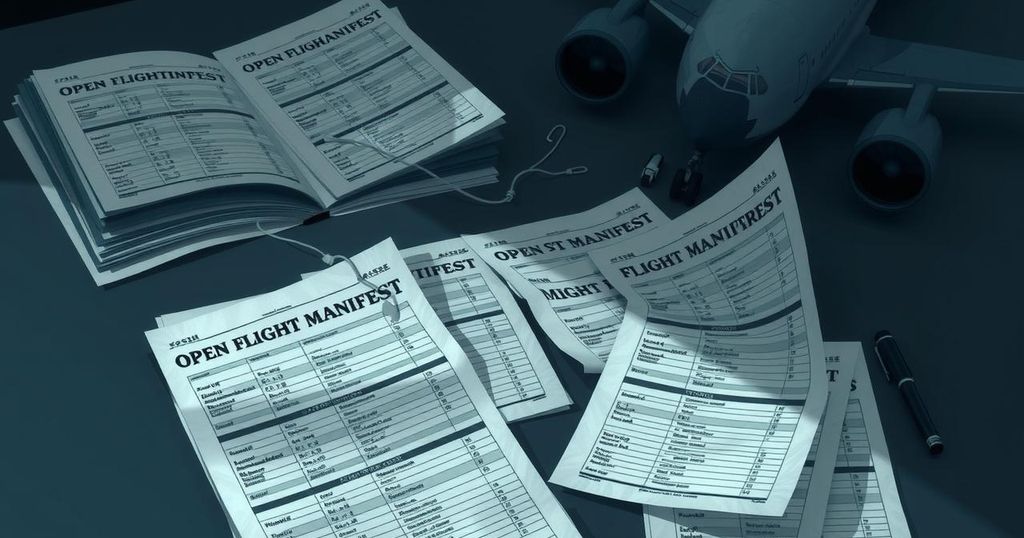As Trump Floats Regime Change in Iran, Past US Attempts May Offer Warnings
President Trump is considering regime change in Iran, raising concerns based on past U.S. military interventions in the Middle East. White House officials suggest that if diplomacy fails, a revolution led by the people could be an alternative to direct military action. However, historical lessons warn of instability and chaos following regime changes, exemplified by the aftermaths in Iraq, Afghanistan, and Libya.
As President Donald Trump considers the notion of “regime change” in Iran, the history of U.S. interventions in the Middle East presents cautionary tales. Trump shared his thoughts on his social media platform, questioning why change might not be justified if the current regime fails to improve the country. This comes in light of recent U.S. military actions targeting Iran’s nuclear facilities and Iran’s subsequent missile strikes against a U.S. base in Qatar.
White House press secretary Karoline Leavitt emphasized that Trump’s stance towards Iran hasn’t changed dramatically despite the current military pressures. She suggested that a more active approach could be warranted if Iran does not both abandon its nuclear ambitions and engage in constructive dialogue. Furthermore, Leavitt noted that regime change might be instigated by the Iranian populace rising against their government, without requiring direct involvement from the U.S.
However, pursuing a path of regime change is fraught with risks, as previous administrations have discovered. During his presidency, Trump criticized what he termed “stupid, endless wars,” maintaining that nation-building efforts, particularly in places like Afghanistan and Iraq, led to disastrous outcomes. History teaches us that initial military successes often lead to prolonged conflicts, rather than swift resolutions.
Following the September 11 attacks, U.S. forces quickly overthrew the Taliban and chased Osama bin Laden into Pakistan. Similarly, Baghdad fell swiftly after the 2003 invasion, which ousted Saddam Hussein. But these swift victories morphed into years of violence and insurgency. After two decades of war, the Taliban reemerged in 2021, while Iraq descended into chaos marked by sectarian violence.
In the recent conflict concerning Iran, while Trump has boasted about damaging Iran’s military and nuclear capabilities through strikes, analysts caution that the fight is far from over. There remains a formidable military presence in Iran, particularly in organizations like the Revolutionary Guard. The potential for a massive military presence does not guarantee stability or the success of regime change.
Moreover, relying solely on airstrikes has proven ineffective historically. A notable example is Libya, where NATO air campaigns could not solely dismantle Gadhafi’s forces, which remained resilient for months until eventually defeated by rebels.
There is no current insurgent force in Iran that could effectively challenge the Revolutionary Guard, and many doubt that foreign troops would risk a ground invasion of Iran, a nation with a population of nearly 80 million. A potential split in Iran’s security apparatus might create an insurgency, yet it could simultaneously plunge the nation into civil conflict.
There are also concerns about foreign perceptions and participation. While there is a significant population of Iranians disillusioned with their government, the 1980 invasion by Iraq demonstrated how swiftly citizens can unite against an external aggressor. The current political climate suggests many individuals are refraining from open dissent or choosing to leave the capital.
Past experiences reveal the dangers of relying on exiled opposition groups; they often fail to gain local support. During previous conflicts, many of these groups returned only to find themselves sidelined by local militias loyal to Iran. Notably, while Reza Pahlavi represents a familiar figure from Iran’s pre-revolutionary past, his ties to Israel and the painful legacy of his father’s rule may complicate his potential appeal.
Lastly, the aftermath of regime change is frequently marred by instability, as seen in Afghanistan, Iraq, and Libya. The overthrow of established regimes often leads to the emergence of armed factions pursuing divergent goals, fueled further by foreign intervention. The cycle of violence can result in civil wars, making it exceedingly unlikely that any new government will emerge in a stable form. Instead, the pattern tends to mirror chaotic circumstances that may be worse than the previous regime, highlighting the complexities and potential pitfalls of contemplating regime change in Iran.
President Trump’s recent musings on regime change in Iran evoke a complicated tapestry of past U.S. military interventions that often ended poorly. With historical lessons illustrating the risks of military action and instability after regime changes, the current drive for a new Iranian government raises more questions than answers. As debates continue over the approach to Iran’s government, caution remains essential, especially given the turbulent legacy of U.S. involvement in the Middle East.
Original Source: apnews.com




Post Comment